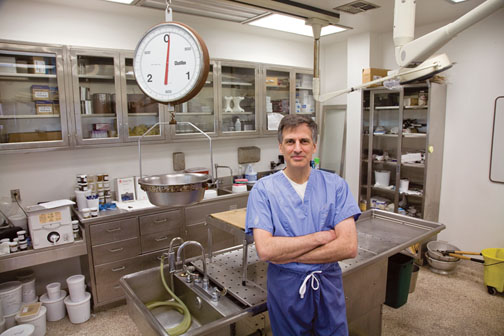What is a Forensic Pathologist?
Forensic Pathology is the legal branch of pathology concerned with:
(1) Determining cause of death (including murder, accident or unexpected death) (2) Examination of some wounds and injuries due to crime or negligence (3) Examination of tissue specimens that may be relevant to rape, or other crimes.
The examination of dead bodies (autopsy) is closely related to anatomical pathology.
The forensic pathologist is a medical doctor who has specialized in the field of pathology with several years of advanced training. In Canada, Forensic Pathology is not a separate specialty from Pathology. So doctors specialize in Pathology and often go to the United States for experience in Forensic pathology. In the U.S., a separate specialty in forensic pathology exists. The forensic pathologist autopsies bodies and determines the cause of death and all other factors that relate to the body directly. They may attend crime scenes and frequently testify in court.
Forensic pathologists work closely with the Coroner (British tradition) or Medical Examiner (American tradition). In some Provinces, there is a Medical Examiner system and in other provinces there is a Coroner’s system. Medical Examiners must be medical doctors, but not necessarily forensic pathologists. Only the Chief and Deputy Medical Examiner are usually Forensic Pathologists. In Ontario, Coroners are also doctors, but in the rest of Canada, coroners are lay coroners and come from many backgrounds. In most cases, the position is part-time, fee-for-service. New Brunswick has a lay coroner system; the rest of the Atlantic Provinces are under the Medical Examiner’s system.
Not all bodies that end up on an autopsy table are necessarily of forensic interest. It is the job of the forensic pathologist to determine the cause and manner of death. If the manner of death is ‘accidental’ then the case is no longer forensic.
How do you become a forensic pathologist?
If you want to be a forensic pathologist, you have to go to medical school, but in order to do so; you must have an undergraduate degree. It is a common misconception that you must have a Bachelor’s of Science degree in order to get into medical school. This is not true, those with a bachelor of arts can also apply and be accepted to medical school.
You must also have postgraduate training in Pathology, also known as internships and residency. This is at least 4 additional years which can be in anatomic or clinical pathology, taking place on this job. This will take place in hospitals that are affiliate with medical schools.
It is also required to have an additional year of training at a large medical examiner’s office where the forensic portion of the training will take place. As an option, it is helpful to have training in another, broader area of forensic science, such as forensic anthropology, odontology, toxicology etc.
If you would like more information about forensic pathology and what it takes to be a forensic pathologist, then check this website to the Canadian Association of Pathologists forensic pathology section. http://www.cap-acp.org/forensic.php
